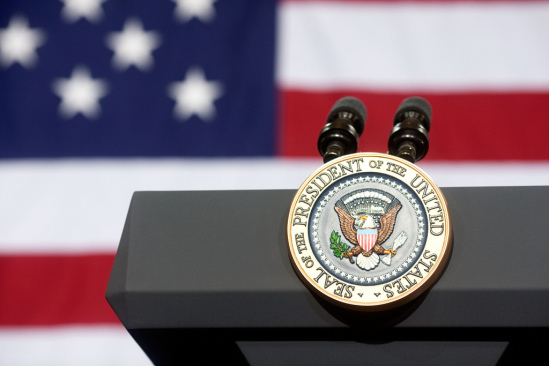
Source: Pete Souza/Flickr
From the Women’s March to the #MeToo Movement, it’s been quite the breakthrough year for women and feminism. Not only have women across America found their collective voice, but these words have also found an audience. Calls for justice no longer fall on deaf ears, as the masses are genuinely eager to listen when we speak.
Yet, despite this definite progress, sexism prevails. Women have made strides toward equality in the most relative of terms, and those steps are critical if we are to build long-term change, but there’s too much work left to do for us to declare an early victory. After all, from the basic assembly line to the highest government office, misogyny still reigns supreme. While 2017 might’ve been about liberation to the naked eye, it’s easy to see that we’ve got our work cut out for us when we stop to take a deeper look at what lies ahead.
Last year, women achieved one collective goal that both cleared the path for others and revealed the roadblocks that persist. While not everyone was pleased when Hillary Rodham Clinton became the first woman to represent a major party during the 2016 presidential election, women praised the former Secretary of State as her nomination was groundbreaking nonetheless. However, Clinton was then dragged through the proverbial mud — scrutinized in ways no man’s ever had to endure — thereby demonstrating that, while the United States might seem to be long overdue for a female president, antiquated perceptions prove that this country isn’t prepared for such a change.
Unlike the male leaders that dominate history, women in the public eye are judged by their appearance—their hair, their makeup, and their attire—well before their professional qualifications and accomplishments gain notice.
Women are shunned if they don’t smile profusely, they are considered deceptive when they wear too much makeup, and it’s become so common to chastise women for wearing an outfit multiple times that it’s now popular to praise powerful women when they wear their favorite dress more than once.
From former First Lady Michelle Obama to Kate Middleton, these high profile women have effectively made it acceptable to do what your average woman does every day. If we were to have a female president, many constituents would likely dwell on her appearance, allowing her looks to overshadow her policies. By now, everyone recognizes that criticizing women’s clothing and style serves as nothing more than a way to degrade the individual and crush her confidence so she second guesses her every move. Such behavior, especially in the context of this theoretical leader of the free world, would undermine democracy and common decency itself.
“Manterrupting” has also gained momentum, as Sen. Kamala Harris can surely attest to, which further emphasizes the lack of respect men have for female leaders, even those colleagues who should be seen as equals. Everyone’s well aware that women don’t earn equal pay in most scenarios, but when we don’t even warrant equal say, it’s obvious one gender enjoys more freedoms and privileges than the other.
Underneath, all such problems derive from the fact that countless men lack respect for the women in their lives. We’re nothing more than bodies, beings created to bring pleasure to the masses. They continue to treat women like objects because they feel threatened and long to belittle those who could very well surpass their personal success. We’ve experienced verbal and physical abuse long enough to realize the methods are nothing more than men’s smokescreen for their insecurities.
If we’re ever to be worthy of the female president experience, we must earn this privilege. We must alter the mindset of those who have yet to shake their old perceptions of women if we wish to rearrange the patriarchy and tear down old walls we were never allowed to climb. Women are each other’s best advocates, but we also need men on our side to teach those who’ve yet to join the 21st century why women’s success translates into success all around. We’re stronger when we work together instead of tearing each other apart. We need to move outside our comfort zones and understand how the world works today if we’re to ever prepare for our inevitable tomorrow.
(This post originally appeared on Storia.)
Advertisements Share this:




